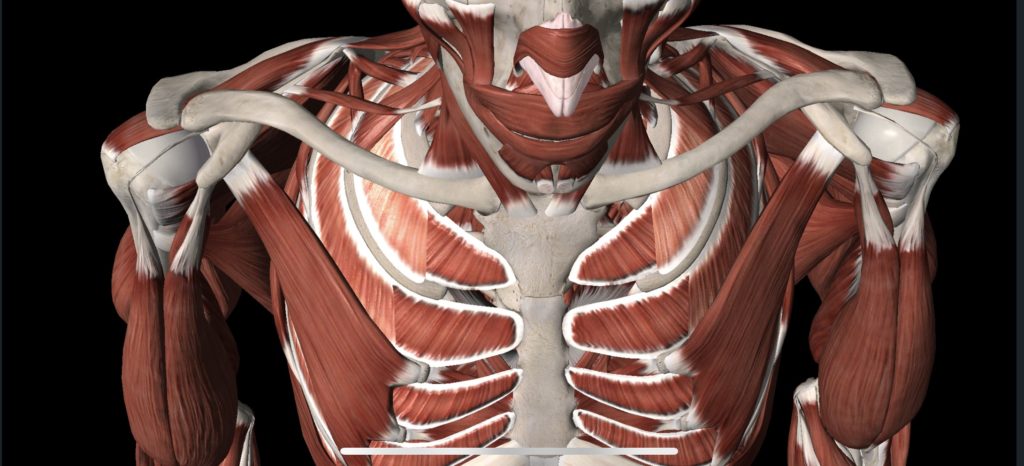
Are you experiencing a pitching injury?
Are you worried the pitching injury could shut you down for the season?
Injuries are a part of any sport. And for baseball pitchers, the risk of injury is especially high. That's because baseball pitchers throw with such intensity and velocity, often putting a lot of stress on their arms. They also can collect a lot of innings pitched. In fact, pitching injuries account for about one-third of all sports-related injuries. Many times, these overuse injuries go unnoticed because the player tries to play through the pain. But by doing that, they can actually make the injury worse and end up taking longer to recover. Pitching injuries can easily go unnoticed because of the pressure to perform for their team or the coach.
If a pitcher experiences pain while throwing, they should immediately stop pitching and seek medical attention. Ignoring the symptoms can cause further damage and prolong recovery time. It's better to take care of an injury before it becomes a bigger issue down the road.
Here are some tips on how to spot signs and symptoms of pitching injuries before it's too late.
What are Some Risk Factors that Pitchers Should Avoid?
 Risk factors that pitchers should avoid include:
Risk factors that pitchers should avoid include:
- Overusing their arm- Pitchers need to make sure they are taking enough days off in between pitching sessions. This will help reduce the risk of injuries.
- Pitching while injured- If a pitcher is injured, they should not be pitching. Continuing to pitch while injured will only make the injury worse and could potentially end their season.
- Pitching on an uneven surface- When pitching, it is important to have a level surface to throw from. Pitching on an uneven surface can cause unnecessary stress on the arm and could lead to an injury.
- Pitching with poor form- Poor form can also lead to injuries for pitchers. It is important for pitchers to make sure they are using proper techniques when pitching in order to reduce the risk of injuries.
What are Common Pitching Injuries?
 Baseball pitchers are susceptible to a variety of injuries. Many times, these injuries go unnoticed because the player tries to play through the pain. By doing that, they can actually make the injury worse and end up taking longer to recover.
Baseball pitchers are susceptible to a variety of injuries. Many times, these injuries go unnoticed because the player tries to play through the pain. By doing that, they can actually make the injury worse and end up taking longer to recover.
One of the most common pitching injuries is an elbow sprain. This injury is caused by overuse or repetitive motions of the arm, such as throwing a baseball. It can cause pain, swelling, and stiffness in the elbow joint.
Other pitching injuries include rotator cuff tear, ulnar collateral ligament tear, labrum tear, and biceps tendonitis. All of these injuries can be extremely painful and can require surgery for treatment.
The ulnar collateral ligament tear is the most well know injury and the surgery to reconstruct the tear is called Tommy John surgery, (for an in-depth analysis of how to prevent this surgery from becoming a necessity for you, follow this link). This is named after a famous pitcher who was the first to have the revolutionary surgery to proclaim his MLB career. This is a surgery of the elbow joint and has a good success rate. Elbow injuries are the easiest to recover from because the joint is a hinge joint not a multi-directional joint like the shoulder. Shoulder surgeries on the other hand have very poor success rates.
What is the rehab Time for Pitching Arm Injuries?
The rehab time for pitching arm Injuries is the period of time it will take to recover from these arm injuries.
- Tommy John surgery is usually a year-and-a-half to two-year recovery process.
- UCL augmentation can cut the recovery time in half.
- Labrum surgery and rotator cuff surgery can take one year to two years to recover but an additional year to rebuild strength to handle the high level of stress again.
What are Some Exercises that Pitchers Can Do to Stay Healthy?
One of the best ways for pitchers to stay healthy is to perform exercises that help them build strength and flexibility. Exercises that help improve shoulder range of motion and stability are a good place to start.
Some exercises that can help achieve this include:
- Doorway stretches – stand in a doorway with your arms outstretched and lean forward, hold for 10 seconds
- Shoulder shrugs – lift your shoulders up towards your ears, hold for 5 seconds
- Push-Up Plus - Get in a push-up position and lock your arms out. Push down and up with your scaps and shoulders without bending your elbows.
- Reverse flys – with a weight in each hand, extend your arms out to the side and bend your elbows slightly, keeping your back straight. squeeze your shoulder blades together as you bring the weights together.
In addition to exercises, it’s important for pitchers to maintain good posture when throwing. This means keeping your back straight and avoiding excessive forward flexion of the spine. Pitching with poor posture can lead to muscle imbalances and increase the risk of injury.
What Can You Do In-season to Prevent Injury?
A pitcher can take a number of steps in-season to help prevent injury. One is to always listen to your body and give yourself time to recover between outings. If you're feeling tired or sore, take a day off. You should also make sure you're properly warmed up before each outing, and that you're using proper mechanics. It's also important to strength train throughout the season, especially your shoulder and arm muscles. And finally, always stay hydrated.
Armcare.com sells a great device that allows pitchers to monitor their arm health in-season. The device attaches to the pitcher's throwing arm and collects data which is then sent to a mobile app. This data includes things like internal rotation external rotation strength ratios, scaption strength, and much more. You can use the code Topvelocity to get 10% off purchases.
If you are in little league baseball or adult league baseball then the best strategies to avoid overuse is not through the traditional method of pitch count limits. Studies have found restricting a pitch count doesn't prevent injury. Pitch count is an easy workaround for many coaches which destroys its purpose of preventing overuse.
How Can You Manage Pain and Discomfort When You're Injured
It can be tough to manage pain and discomfort when you're injured. However, there are a few things you can do to make the process a little bit easier.
Here are a few tips to manage pain and discomfort:
- Stay positive - It can be easy to get down on yourself when you're injured, but it's important to stay positive and focus on your recovery.
- Take your time - Don't try to rush your recovery - take the time you need to heal properly.
- Modify your activity level - You may need to modify your activity level while you're injured, so be sure to listen to your body and take it easy.
- Seek treatment if needed - If you're experiencing pain or discomfort, seek treatment from a fitness or healthcare professional as soon as possible.
While it's important to follow these tips, it's also important to take preventative measures to avoid injuries in the first place. Some ways to do this include having proper warm-up and cool-down routines, learning proper technique of training, listening to your body and not overdoing it, and using proper form while pitching.
When Should You See a Doctor About an Injury?
There is no definitive answer to this question. In general, though, you should seek medical attention if you experience any of the following symptoms.
List of symptoms that require medical attention.
- Severe pain
- Swelling
- Deformity
- Inability to move the joint
- Fever
- Redness or warmth around the joint
- Bleeding or discharge
But it is also important to be proactive in preventing pitching injuries before they occur.
Here are some tips for maintaining a healthy pitching arm:
 Warm up properly before every practice and game
Warm up properly before every practice and game- Strengthen the muscles around your shoulder and elbow with exercises like push-ups, pull-ups, push-up plus, pull-ups plus, dumbbell curls, tricep extension, and a rotator cuff routine.
- Don't throw too many pitches or play too many games in a short period of time
- Take regular breaks from throwing to allow your arm time to rest
- Use proper mechanics and technique when throwing
Pitching injuries can sideline players for weeks, months, or even end their careers. Following these tips can help keep you on the field and performing at your best. Always remember to listen to your body and seek medical attention if necessary. Taking care of your pitching arm now can prevent a more serious injury in the future.
What is the Recovery Process like for Pitchers Who Have Suffered an Injury?
 The recovery process for pitchers who have suffered an injury is often long and arduous. In order to return to their previous level of performance, pitchers must go through a comprehensive rehab program that may include physical therapy, exercises, and rehabilitation. Depending on the severity of the injury, some pitchers may never recover their previous level of performance. If you need help with this I highly recommend you attend a 3X Velocity Camp and stay during the week for rehab and development.
The recovery process for pitchers who have suffered an injury is often long and arduous. In order to return to their previous level of performance, pitchers must go through a comprehensive rehab program that may include physical therapy, exercises, and rehabilitation. Depending on the severity of the injury, some pitchers may never recover their previous level of performance. If you need help with this I highly recommend you attend a 3X Velocity Camp and stay during the week for rehab and development.
But why wait until an injury has already occurred?
Prevention is key when it comes to pitching injuries.
First and foremost, proper conditioning and strengthening of the muscles used in pitching are crucial. This includes not only the shoulder but also the core and lower body muscles that play a role in generating power and stability during the pitch.
In addition, pitchers should pay attention to their mechanics and form while throwing. Overusing certain muscles or putting too much strain on certain joints can lead to injury. Working with a coach or trainer at TopVelocity on refining one's pitching technique can greatly reduce the risk of injury.
The 3X Pitching Velocity Program Prevents Pitching Injury
 The 3X Pitching Velocity Program can help pitchers prevent injury by teaching them how to properly warm up and condition their bodies for the rigors of pitching. The program also includes a comprehensive guide to pitching mechanics, which can help pitchers stay healthy and avoid common injuries.
The 3X Pitching Velocity Program can help pitchers prevent injury by teaching them how to properly warm up and condition their bodies for the rigors of pitching. The program also includes a comprehensive guide to pitching mechanics, which can help pitchers stay healthy and avoid common injuries.
Additionally, it's important for pitchers to listen to their bodies and speak up if they are feeling any pain or discomfort. Ignoring these warning signs can lead to serious injuries down the road.
It's also a good idea for pitchers to diversify their workouts and include exercises that strengthen the shoulder, elbow, and core muscles which are how the 3X Pitching Velocity Program is designed with a career's worth of training levels. This can help prevent imbalances and overuse injuries.
While pitching injuries may seem unavoidable at times, taking steps like following a proper training program and listening to your body can greatly decrease the risk of injury. Don't let yourself fall victim to the common pitfalls of pitching – take action now to stay healthy on the mound. Purchase the 3X Pitching Velocity Program today!


 Warm up properly before every practice and game
Warm up properly before every practice and game
